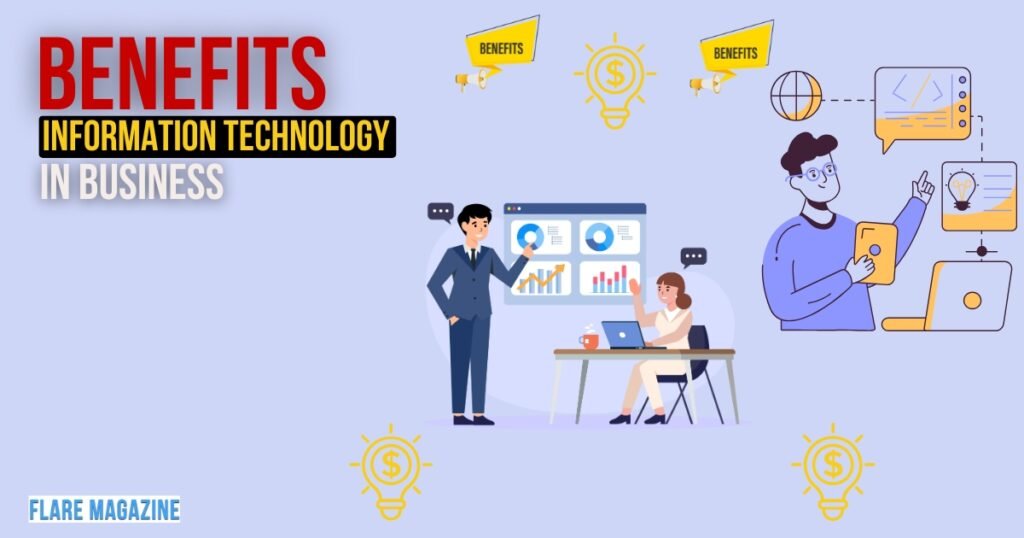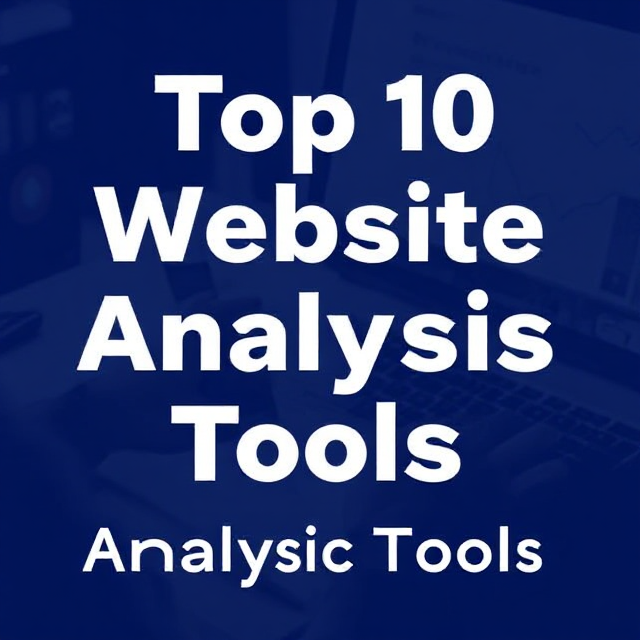Information Technology (IT) uses technology and tools to manage information efficiently. It is crucial in today’s world to link millions of people through digital networks. It encompasses computer systems, software, and hardware that process data rapidly. It helps store, retrieve, and transmit information with ease and accuracy. As technology advances, IT becomes more accessible and user-friendly.
Information Technology has been deeply integrated into everyday business processes. Companies use IT to streamline customer service and improve performance. It supports businesses by optimizing data analysis for strategic decision-making. Modern businesses rely on IT for communication, productivity, and data security. It transforms traditional business models into efficient, tech-driven systems.
In this post we will learn in detail about How does information technology affect business?
What is Information Technology?
Information technology (IT) uses computers to manage and process information efficiently. It involves using hardware and software systems to complete various tasks and solve problems. Businesses use IT to store and manage important information securely and consistently. IT systems allow companies to process large amounts of data quickly and accurately.
It allows businesses to share information with employees, partners, and customers effortlessly. It enhances business operations by automating tasks and streamlining workflows for greater productivity. It also improves communication, making collaboration more straightforward and effective within organizations.
Information technology helps companies analyze data to make better business decisions quickly. Innovative IT solutions foster the development of intelligent applications that drive business success. Through IT, businesses can better serve their customers and gain a competitive advantage.
Explore More: What is WPB technology?
IT Services and Local Businesses
Local businesses experience significant benefits from using IT services. A primary advantage is the optimization of operations, which leads to smoother and more manageable workloads.
IT services streamline processes, enabling efficient task management for local businesses. This enhanced efficiency improves customer engagement by offering personalized service experiences. IT services focus on improving customer service through quick response systems and reliable support. Cloud solutions, facilitated by IT services, provide secure data storage and effortless organization. Local businesses access managed services, allowing task outsourcing and focus on core operations.
With managed services, businesses redirect energy to growth strategies and customer interaction. IT services equip businesses with essential tools for competitiveness in the modern market. This competitive edge ensures their sustainability and relevance in an increasingly digital economy.
The Benefits of Information Technology (IT) in Business

Here are some of the most essential benefits of Information technology (IT):
- Information Technology (IT) greatly enhances business efficiency and productivity.
- It allows businesses to complete tasks faster and with greater accuracy.
- Businesses use IT to automate routine tasks, reducing time and effort.
- IT solutions enhance operational efficiency by optimizing workflow and resource management.
- Companies use IT to secure their data and protect sensitive information from cyber threats.
- Businesses gain a competitive edge by promoting their products through digital platforms.
- Information technology supports strategic planning by providing accurate and timely data analysis.
- Managed IT services offer businesses advantages in investments and future projections.
- Adapting to new IT practices helps businesses stay ahead in the competitive market.
- It ensures smooth communication and collaboration, essential in today’s interconnected world.
Using Information Technology to Promote Products and Services
Using IT to promote products is crucial in today’s digital marketplace. Companies utilize social media platforms to understand and engage with their audience effectively. Businesses create engaging visuals to attract attention and captivate viewer interest. Digital marketing platforms are essential tools for reaching targeted customers on a large scale.
By leveraging IT, companies can develop campaigns that address their audience’s unique needs. Understanding IT’s role aids businesses in maximizing their promotional opportunities in the digital era. Managed IT services support businesses in optimizing technology for successful promotional efforts.
It ensures that campaigns run smoothly and efficiently and reach potential new customers. Innovative strategies help businesses stay competitive and relevant in a rapidly changing market. Technologically informed businesses can effortlessly make impactful strides in achieving their marketing goals.
How Information Technology Promotes Innovation?
Information Technology is essential for encouraging innovation in modern businesses. It creates idea-sharing platforms that foster collaboration and openness among team members. Employees gain time to brainstorm and innovate, enhancing their creative output effectively.
New ideas often result in improved customer relationships and increased sales opportunities. Businesses use IT to develop fresh products and services and stay competitive. IT systems track project progress, helping to adjust strategies for successful outcomes. Managed IT services ensure businesses apply cutting-edge solutions efficiently and securely.
Adapting to new IT practices maximizes innovative potential and business growth. Technologically advanced companies stay at the forefront by refining processes and adopting new trends. IT tools give organizations insights into market changes, helping them quickly adjust strategies.
How Managed IT Services?
Managed IT services and customized solutions, addressing specific business needs and challenges. These services reduce workload, allowing companies to focus on core activities more efficiently.
They provide expert management, ensuring IT operations run smoothly and stay updated consistently. Companies gain flexibility to scale IT resources according to changing demands and growth. Managed IT services proactively monitor IT infrastructure, identifying potential issues before they impact operations.
This approach offers peace of mind that data remains secure and compliant with regulations. Businesses benefit from using the latest technologies, enhancing their competitive advantage in their industries. Partnering with a managed IT provider can maximize IT benefits, ensuring optimal use of available technology.
The Role of Information Technology in Business Operations
Businesses automate routine tasks with IT, saving both time and resources efficiently. Automation reduces manual errors, increasing accuracy and productivity in daily business practices. IT tools enhance efficiency by optimizing workflows and minimizing repetitive human tasks.
Emails and instant messaging facilitate faster workplace interactions, benefiting internal communication. Employees use instant messaging tools to collaborate and share information effortlessly. External communication improves with customer service platforms and secure partner collaboration tools.
Data storage and analysis are crucial for insightful business decision-making processes. Companies use databases to manage their business data efficiently and securely. Cloud computing allows businesses to store and access data anywhere at any time.
Information Technology in Decision-Making
Business intelligence (BI) tools help companies make informed decisions using data analysis. Analytics tools offer detailed insights, guiding strategic business choices with real-time information. Businesses access and analyze real-time data to adjust strategies immediately. Companies use reporting tools to understand trends and improve business performance.
Predictive models forecast future sales and help businesses plan efficiently. They assist in forecasting demand, optimizing inventory, and effectively reducing costs. Businesses predict market trends using data-driven tools, staying competitive in the industry. Predictive analytics enhance decision-making by anticipating customer needs and preferences.
Collaboration platforms improve team communication, enhancing decision-making across distances. IT tools like Zoom facilitate seamless meetings and encourage active team participation. Microsoft Teams supports remote work, ensuring connectivity and continuous project progress. Collaborative platforms advance teamwork, enabling quick decisions and immediate feedback.
IT and Business Innovation

E-commerce enables businesses to sell products globally, quickly reaching customers. Cloud services allow companies to store data securely, ensuring accessibility anywhere, anytime. Subscription models provide customers with regular access to services, enhancing user convenience. Digital transformation modernizes traditional industries, increasing efficiency and customer satisfaction.
IT accelerates research and development, driving innovation in business products. Advanced IT tools and platforms make creating new apps easier. Digital platforms allow businesses to offer unique services, attracting more customers worldwide. It supports the development of innovative products, enhancing customer experiences.
Amazon revolutionized the retail industry, offering a wide range of products remotely. Uber transformed transportation services, providing convenient rides through a user-friendly app. Fintech innovations, like mobile banking, disrupt traditional finance with fast, easy access to funds. IT drives transformative change in industries, creating new opportunities and challenges.
IT and Competitive Advantage
Businesses use IT to automate tasks, reducing labour and boosting productivity efficiently. IT systems minimize errors, cutting costs while ensuring smooth operations across all departments. Technology optimizes resources, helping companies save money and improve service delivery. Cloud services reduce hardware costs, allowing businesses to focus on core activities.
It helps monitor market trends, keeping businesses informed and ready to react promptly. Data analytics tools study competitors, offering valuable insights for strategic decision-making processes. Companies use IT to analyze consumer behaviour, helping create competitive marketing strategies. Market analysis reports reveal opportunities, allowing businesses to improve their market positioning effectively.
It personalizes customer experiences through recommendation algorithms tailored to individual preferences. Targeted marketing campaigns utilize data, reaching specific audiences with relevant offers and deals. Businesses tailor products and services, enhancing customer satisfaction and fostering brand loyalty. Advanced IT solutions allow real-time recommendations, improving customer engagement and retention rates.
Cybersecurity and IT Risks
Cyberattacks include hacking, data breaches, and identity theft targeting business information systems. Thieves hack into networks, steal sensitive data, and disrupt business operations. Data breaches hurt businesses by exposing private user information and damaging trust drastically. Phishing scams target users through emails, tricking them into revealing confidential information quickly.
Businesses protect data using encryption, keeping sensitive information safe from unauthorized access. Firewalls act as barriers, blocking attackers from successfully reaching a company’scompany’s internal network. Multi-factor authentication adds security layers, requiring extra steps to verify user identities securely. Regular updates and patches ensure software defences against emerging threats stay current and effective.
IT tools help businesses identify, assess, and manage potential risks associated with technology use. Risk management plans mitigate threats by analyzing vulnerabilities and implementing security protocols effectively. IT teams monitor networks, spotting suspicious activities and responding to risks promptly. Practising risk management improves a company’scompany’s preparedness for cyber threats and ensures business continuity.
The Future of IT in Business
AI transforms businesses by automating roles and improving decision-making processes effectively. Machine learning analyzes data patterns, providing businesses insights for better strategic planning. Blockchain enhances security and transparency, building trust in business transactions globally. IoT connects devices, enabling real-time data collection and more intelligent business operations worldwide.
Businesses continually update IT systems to stay relevant and competitive in the market. Digital tools streamline processes, increasing productivity and improving efficiency across industries. Companies innovate products through IT advancements, constantly meeting evolving consumer expectations. Adopting new IT technologies helps businesses adapt to changing market trends seamlessly.
It enables businesses to operate globally, efficiently reaching customers in different countries. Digital communication tools facilitate seamless collaboration across teams located worldwide. E-commerce platforms expand market reach, allowing businesses to sell to global audiences effortlessly. It supports global operations by ensuring data accessibility and connectivity in diverse regions.
Conclusion
Information technology simplifies business operations, making processes efficient and cost-effective. Efficient IT systems support timely decision-making, which is crucial for gaining a competitive advantage today. Innovation thrives through IT, continually driving new product and service development. Analyzing market trends with IT empowers businesses to stay ahead of competitors consistently. Customization through IT enhances customer satisfaction, builds loyalty, and significantly improves brand reputation.
Embracing IT is essential for businesses to thrive in the modern, digital economy. Technology transformations open doors to new opportunities and ensure sustainable business growth worldwide. Today, businesses adopting IT adapt better to rapid changes and challenges in global markets. Companies leveraging IT experience increased efficiency, reduced costs, and enhanced customer engagement.
FAQ’sFAQ’s
How does technology affect business, and why?
Technology increases efficiency and productivity. It automates tasks and streamlines processes. Businesses gain insights from data analysis. Customers receive better and faster services. Technology also enhances communication and collaboration for businesses.
How do information systems affect business?
Information systems improve decision-making by organizing data. They help track sales and trends, assisting businesses in better managing resources and operations. Systems also reduce errors in operations, improving quality. Practical information systems boost overall business performance.
How does information technology help businesses?
Information technology optimizes operations and reduces costs. It improves communication within organizations, enabling businesses to reach wider audiences online. It also enhances customer service and engagement. Companies use IT for innovation and market analysis.
What effect has information technology had on business management?
Information technology simplifies task management, facilitates efficient team communication, and helps managers make data-driven decisions quickly. It also helps monitor performance and progress and enhances strategic planning and competitiveness.
Why should businesses adopt information technology?
Businesses adopt IT to remain competitive. Technology drives innovation and growth. IT solutions streamline operations and cut costs. Companies reach global markets with IT. Adopting IT supports better customer experiences and satisfaction.



